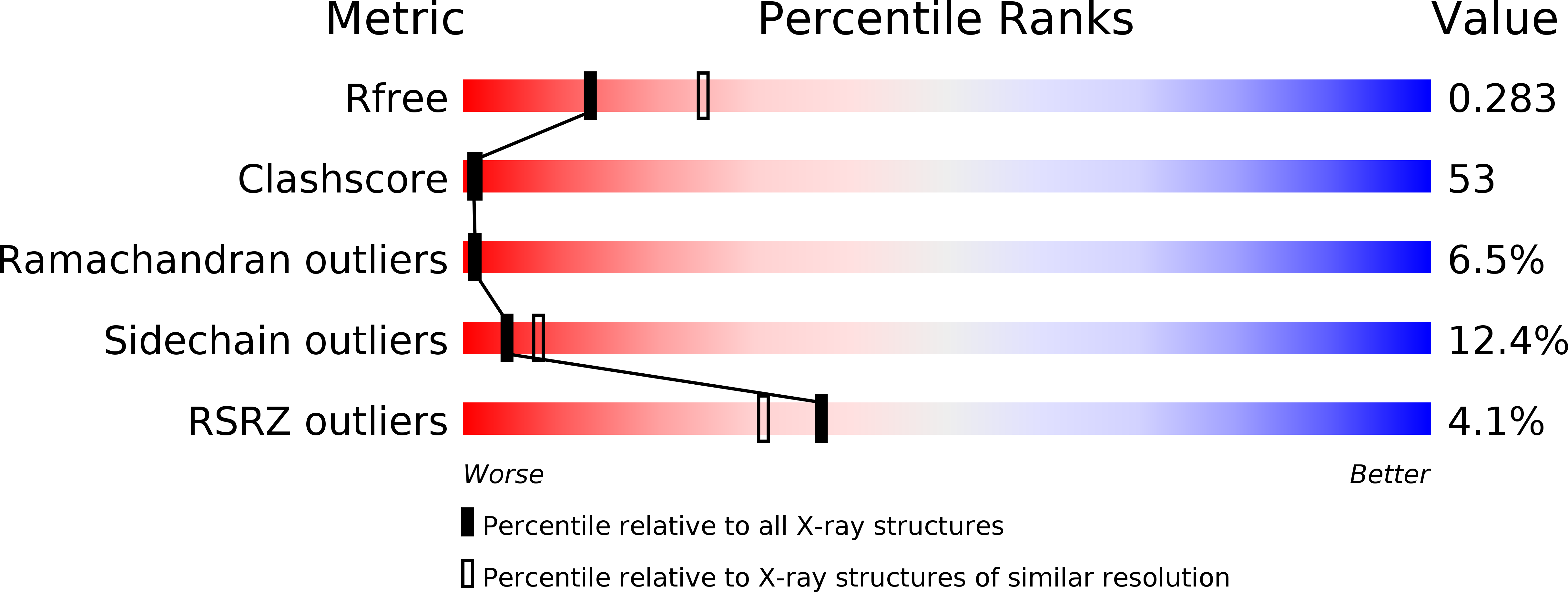Conformational changes of the flavivirus e glycoprotein
Zhang, Y., Zhang, W., Ogata, S., Clements, D., Strauss, J.H., Baker, T.S., Kuhn, R.J., Rossmann, M.G.(2004) Structure 12: 1607-1618
- PubMed: 15341726
- DOI: https://doi.org/10.1016/j.str.2004.06.019
- Primary Citation of Related Structures:
1TG8, 1TGE, 1THD - PubMed Abstract:
Dengue virus, a member of the Flaviviridae family, has a surface composed of 180 copies each of the envelope (E) glycoprotein and the membrane (M) protein. The crystal structure of an N-terminal fragment of E has been determined and compared with a previously described structure. The primary difference between these structures is a 10 degrees rotation about a hinge relating the fusion domain DII to domains DI and DIII. These two rigid body components were used for independent fitting of E into the cryo-electron microscopy maps of both immature and mature dengue viruses. The fitted E structures in these two particles showed a difference of 27 degrees between the two components. Comparison of the E structure in its postfusion state with that in the immature and mature virions shows a rotation approximately around the same hinge. Flexibility of E is apparently a functional requirement for assembly and infection of flaviviruses.
Organizational Affiliation:
Department of Biological Sciences, Lilly Hall, 915 West State Street, Purdue University, West Lafayette, IN 47907, USA.

















